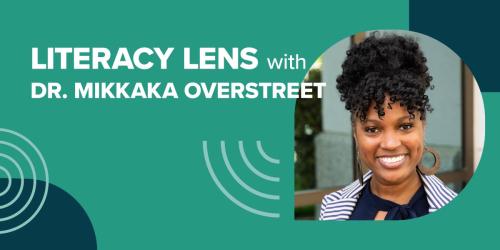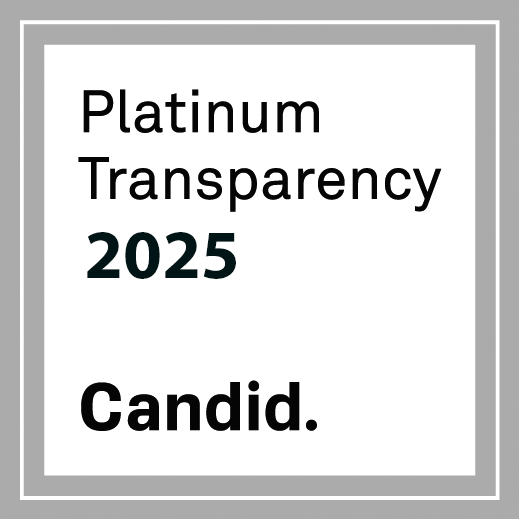Literacy Lens: Promising Strategies for Slowing the Summer Slide

It’s June, which means all around the country, school is wrapping up. School personnel are preparing for much-needed downtime while parents gird their loins and stock their refrigerators. (Seriously, why do children eat so much more when they’re out of school?) It’s time for camps and family trips and barely contained chaos.
But there’s also an enemy preparing to rear its ugly head: the summer slide.
It would be lovely if we were talking about a cool water slide, or even the white-hot metal slides that stuck to the thighs of my youth. Unfortunately, the summer slide is not nearly as much fun.
Summer slide is the phenomenon in which children regress while school is out, losing as much as 20 percent of their school-year gains in reading. Preventing summer slide is critical for helping students build toward literacy: the foundation for lifelong learning and success.
Preventing summer slide is critical for helping students build toward literacy: the foundation for lifelong learning and success.
Literacy is a top priority for many states, which are turning to evidence-based approaches, early literacy efforts, and extended engagement—including summer learning. Oregon, Education Northwest’s home state, is one of the states leading by example through innovative literacy and summer reading programs.
Let’s take a closer look at the research on the summer slide and how states can follow Oregon’s lead to combat this phenomenon.
What Do We Know About the Summer Slide?
According to the National Summer Learning Association, students from low-income households “tread water at best or even fall behind” over the summer, while their peers from higher-income households “build their skills steadily.” A white paper commissioned by the Collaborative Summer Library Program cites that the summer slide creates a three-month gap in reading achievement between students from low- and high-income households. The paper also notes that that summer slide is cumulative: By grade 9, it accounts for two-thirds of the reading achievement gap between students from low-income households and their peers. Furthermore, different summer learning experiences during elementary school years can ultimately impact whether students earn a high school diploma and continue to college.
The summer slide is not insurmountable, however. Students from low-income households with access to books over the summer see significantly more gains in reading scores from spring to fall compared to other students from low-income households without access to books and students from high-income households with access to books. Elementary school students with high levels of attendance (at least five weeks) in voluntary summer learning programs experience noticeable benefits in both math and reading.
The National Summer Learning and Enrichment Study, led by Education Northwest’s own Allison Crean Davis, examines how states and districts implement summer learning programs and what makes them successful. According to her research, summer learning programs evolved since the COVID-19 pandemic, due largely to a national call to action “for states and school districts to use summer learning to help kids recover academically and socially from having spent so much time away from school, their peers, and their teachers.”
This push, paired with federal funding, has allowed summer programs to expand and innovate. Many programs are now designed with equity in mind, aiming to close opportunity gaps. Quality summer learning programs give students from lower-income households access to the content and resources they need to be successful. Of course, effective summer programs are not just remedial—they offer novel, engaging experiences that help students reconnect with learning and school. According to the Wallace Foundation, “well-implemented and well-attended summer learning programs have shown positive outcomes for participants in reading and math achievement, social development, mental health, school engagement, and decreased risk-taking behaviors.”
Quality summer learning programs give students from lower-income households access to the content and resources they need to be successful. … they offer novel, engaging experiences that help students reconnect with learning and school.
State-Level Approaches to Stopping the Summer Slide
In January 2025, the Wallace Foundation released a report on summer learning expansion efforts in nine geographically and politically diverse states: Georgia, Louisiana, Massachusetts, Michigan, New Mexico, Oregon, Tennessee, Texas, and Vermont. The states have taken a strategic approach to summer learning by aligning it with broader educational goals and building strong coalitions to ensure long-term sustainability. By setting clear priorities and securing funding beyond temporary federal relief, states laid the groundwork for lasting impact. These efforts often began with garnering support from stakeholders across education, government, and community sectors to create a unified vision for summer learning.
Many states implemented grant programs that provided funding to school districts and community organizations. These grants supported a mix of academic instruction, enrichment activities, and wellness services, ensuring that summer programs addressed learning recovery as well as holistic student development. Importantly, states used legislation and grant criteria to prioritize access for underserved groups—such as students from low-income households, those performing below grade level, and students with diverse learning needs—while addressing barriers like transportation and meal access.
Quality was another central focus. States encouraged or required the use of evidence-based practices and tied funding to the implementation of proven program models. They also invested in training and support for educators and program staff to strengthen the summer learning workforce. Finally, states emphasized the importance of data collection and evaluation. By aligning data efforts with program goals and using tools like surveys, assessments, and grant reports, states were able to measure impact without overburdening providers, using insights to refine and improve future programming.
Combatting the Summer Slide: Oregon Summer Reading Programs
Since the release of the Wallace Foundation report, Oregon—one of the featured states—has increased its efforts to expand quality summer learning. The initiatives detailed below give examples of the state’s comprehensive, collaborative approach to support student learning during the summer, with a strong focus on literacy and community engagement.
State Summer Learning Grants
In 2025, Oregon took a significant step toward addressing learning loss and promoting literacy by passing House Bills 5047 and 2007, which allocate $35 million in state funding for summer learning programs this year plus additional funds for 2026 and 2027. The grants aim to improve reading proficiency, with a strong emphasis on students who are reading below grade level. The initiative is grounded in the belief that summer learning can be a powerful tool to close achievement gaps, particularly for historically underserved communities. The funding supports a wide range of programs, from structured literacy instruction to enrichment activities that integrate reading into hands-on learning. Schools, community-based organizations, and educational nonprofits are encouraged to partner in designing and delivering these programs, creating opportunities for innovative, locally tailored solutions. The state has also emphasized the importance of aligning these efforts with Oregon’s broader educational frameworks to ensure consistency and impact.
As an approved early literacy professional development provider, Education Northwest plans to partner with several community-based organizations to support the implementation of high-dosage tutoring. It’s exciting to be a part of an initiative grounded in research and aligned with the state’s goals as well as best practices from the Wallace Foundation report. (If you work at a school or organization in Oregon and want to partner with my team on literacy learning or strategic planning, connect with Dr. Mikkaka!)
Family and Community Engagement
Oregon recognizes that families and communities are essential partners in children’s literacy development. Summer learning efforts are most effective when they extend beyond the classroom and into homes and neighborhoods. To this end, many programs include components that actively engage parents and caregivers—such as family literacy nights, take-home reading kits, and bilingual resources. These initiatives aim to empower families with the tools and confidence to support reading at home, regardless of their own literacy levels. Community events, book giveaways, and culturally relevant programming further strengthen the connection between families and educational institutions. By fostering a shared responsibility for literacy, Oregon is building a more inclusive and supportive learning environment for all children.
Multnomah County Library’s Summer Reading Program
Community organizations also play a vital role in providing comprehensive student support. As discussed in previous blogs, libraries have long been hubs of summer learning. The Multnomah County Library leads Oregon in community-based literacy engagement through its expansive Summer Reading Program. In 2024, over 112,000 children participated, making it Oregon’s largest and most inclusive summer reading initiative. The program is designed to foster a love of reading by offering incentives, book lists, and engaging activities that appeal to children of all ages and backgrounds. It also serves as a critical access point for families who may not have books at home or who face barriers to traditional educational resources. By partnering with schools and local organizations, the library ensures that its programming is both accessible and culturally responsive. The scale and success of this program highlight the vital role that public libraries play in Oregon’s literacy ecosystem, especially when school is out of session.
Oregon State University and Institute of Reading Development
Oregon State University, in collaboration with the Institute of Reading Development, offers a suite of summer reading programs tailored to different age groups, from early readers to high school students. These programs are designed to build foundational skills such as phonemic awareness, vocabulary, and comprehension while fostering a lifelong love of reading. Delivered through platforms like readingprograms.org, the courses are accessible to families across the state, including in rural or underserved areas. The curriculum is based in research and developmentally appropriate, ensuring that students not only maintain but also advance their reading skills over the summer. The university’s involvement lends academic rigor and credibility to the initiative, while the partnership model allows for scalability and broad community reach.
Collaborative Literacy Ecosystem
At the heart of Oregon’s summer learning strategy is a commitment to collaboration. Schools, libraries, universities, and nonprofits work together to create a cohesive and comprehensive literacy support system. This collaborative approach is guided by the Oregon Early Literacy Framework, which provides a common language and set of expectations for high-quality instruction. By aligning goals and sharing resources, these partnerships deliver consistent support to students across different settings. Whether a school district teams up with a local library or a university partners with a community center, these joint efforts amplify impact and reduce duplication. The result is a more resilient and responsive educational ecosystem—one that is better equipped to meet the diverse needs of Oregon students.
Call to Action: Help Combat the Summer Slide
Collectively, we can ensure students have the tools and resources they need to continue learning over the summer. As you search for ways to engage or support students and families, the resources linked throughout this article and those listed below may be useful.
Reimagine Education Starting This Summer
When planning for summer programs, consider students’ full humanity, center equity, and aim for well-rounded programs to set students up for success.
Literacy Lens: A Love Letter to Libraries
The public library remains one of the few spaces in our society that offers access to vital resources, without the requirement of spending money.
Summer Learning Planning Resources and Toolkit
This toolkit from the Wallace Foundation offers more than 50 evidence-based tools and resources—drawn from the work of five urban school districts and their partners—to help educators deliver summer learning programs that make a real difference.
Dr. Mikkaka Overstreet is a principal consultant at Education Northwest specializing in literacy and serves on the Oregon Early Literacy Educator Preparation Council. She is passionate about helping make quality, equitable education a reality for all kids— especially those who have been historically marginalized based on their identities.



